The concepts of statues was the first thing I think we learned. The value of the caving of concepts before the “gods”. The statues where small and had values either extrinsic to their life style or the sense of fear the the gods might smite them out of not being worshiped. while others become more tuned to their
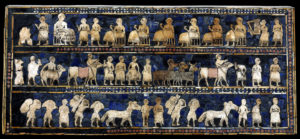 As time moved on the statues became larger and had more defined religious and cultural definition. The Egyptians and the Mesopotamian art was had a stronger focus on the spiritual deity in their cultures. The Mesopotamian statues where huge with beast like structures and a human head which was believed to be a deity that protected the structure within. While The Egyptians had the belief of the gods as a form of judgment on them and their culture surrounded the idea of dead and embalming creating statue that fit the surrounding terrain more than any thing else really. The Idea of a pharaoh and a orderly form of servants and people with relation to the gods was the main focus of creating monoliths specific to their culture. Building the pyramid as tomb and the temple around it showed the dedication to their belief. As shown the god of death Anubis is a man with a jackal head judging the peoples heart before he allows them to past.
As time moved on the statues became larger and had more defined religious and cultural definition. The Egyptians and the Mesopotamian art was had a stronger focus on the spiritual deity in their cultures. The Mesopotamian statues where huge with beast like structures and a human head which was believed to be a deity that protected the structure within. While The Egyptians had the belief of the gods as a form of judgment on them and their culture surrounded the idea of dead and embalming creating statue that fit the surrounding terrain more than any thing else really. The Idea of a pharaoh and a orderly form of servants and people with relation to the gods was the main focus of creating monoliths specific to their culture. Building the pyramid as tomb and the temple around it showed the dedication to their belief. As shown the god of death Anubis is a man with a jackal head judging the peoples heart before he allows them to past.
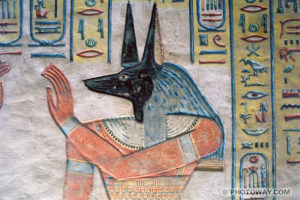
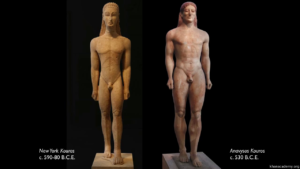 The Greeks and the Romans define their art to be more human creating marble statues that celebrates the human body “kouros” . The added humanism and color to the figure
The Greeks and the Romans define their art to be more human creating marble statues that celebrates the human body “kouros” . The added humanism and color to the figure
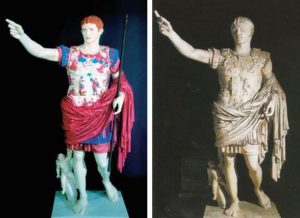 The Greeks that slowly moved from the ideal more symmetric structure of a ideal athletic figure to more of a organic human structure that has more of a curve and more realistic facial features. While still being faithful to their religion they portray their gods in marble to re enforce the concepts of their culture as people and how they also take advantages to the usage of the materiel to carve more intricate ideas into the statue it self
The Greeks that slowly moved from the ideal more symmetric structure of a ideal athletic figure to more of a organic human structure that has more of a curve and more realistic facial features. While still being faithful to their religion they portray their gods in marble to re enforce the concepts of their culture as people and how they also take advantages to the usage of the materiel to carve more intricate ideas into the statue it self
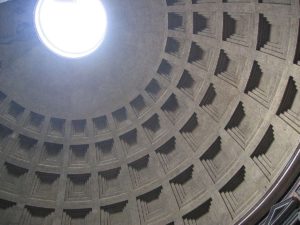
Temples where built using the concepts of math and advancements they had found and is also apart of what made the art pop out while being efficient at lowering the weight of the walls.
As they may still build as time moves on the statues are upgraded to being hollow cast in bronze and as time moved further on the fallout of the once beautiful art be came muddied over time and less persevered of the original intentions.
the thing that ties most of the art together would be the usage of color to show what their civilization has mastered and how it complements the art it self
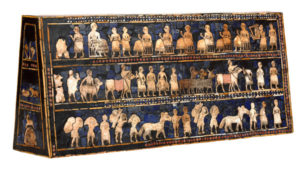
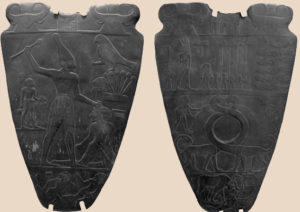
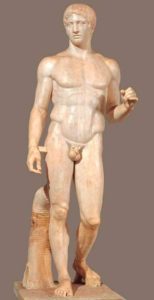
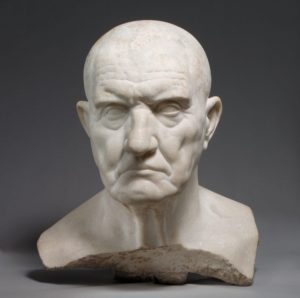

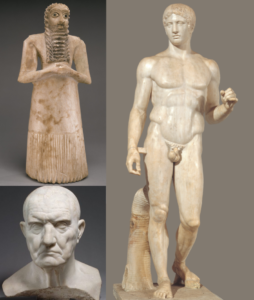
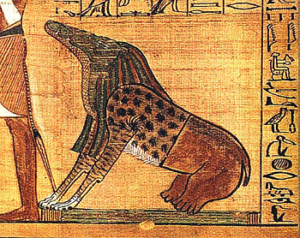
 Mesopotamian and Egyptian art are
Mesopotamian and Egyptian art are 
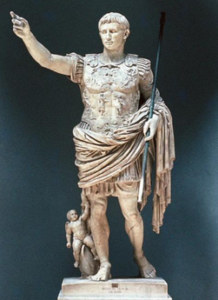 his armor. Although he was me
his armor. Although he was me


